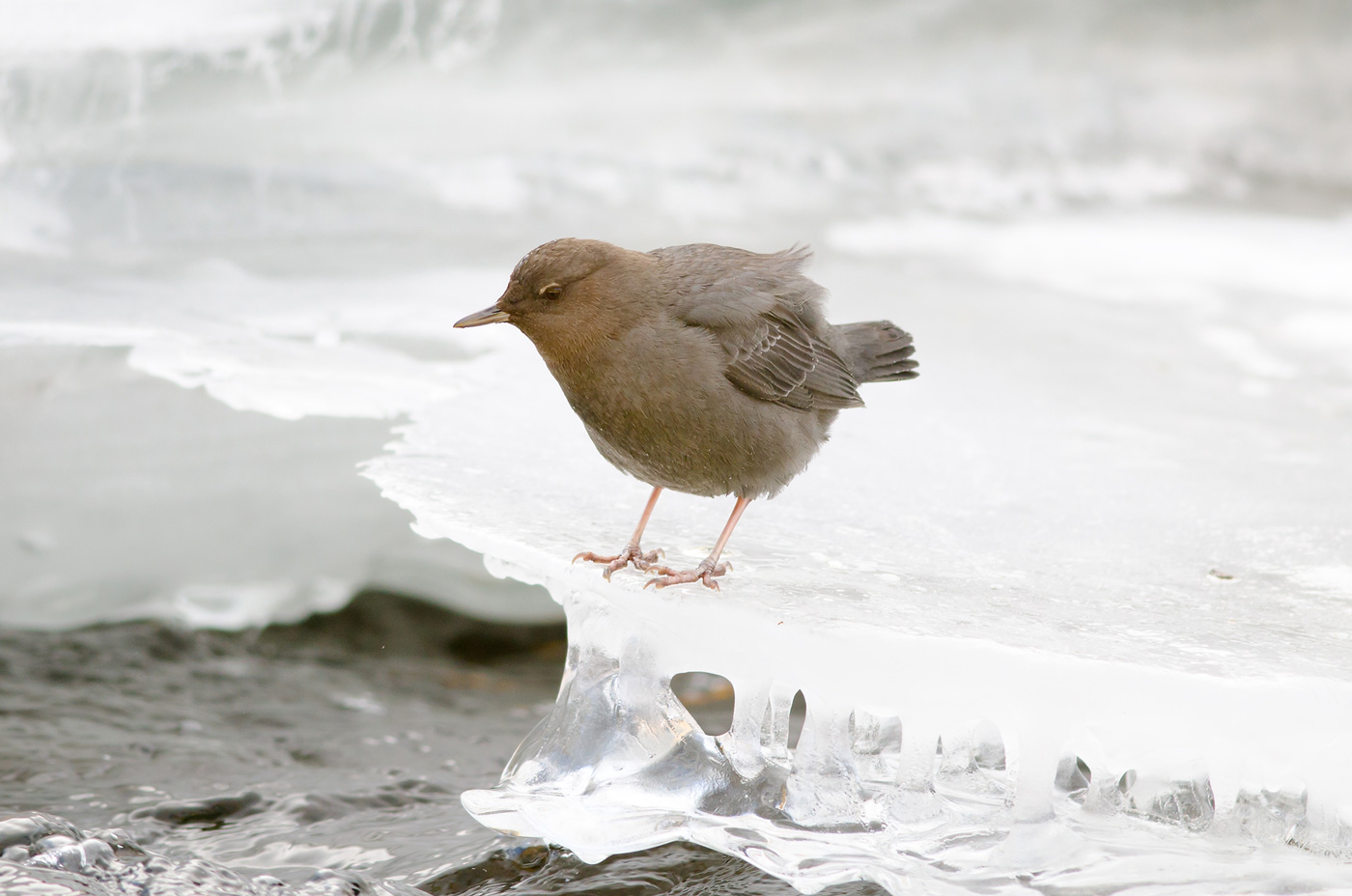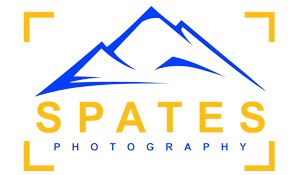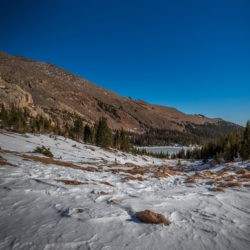
Warblers, sparrows, chickadees, and other small birds are much more challenging to photograph than herons, pelicans, and other large birds that put up with human activity. Most small songbirds usually don’t like sapiens getting too close though. These are the birds I will be talking about in this article. The more challenging ones that are not used to humans, and will more than likely fly away when they suspect your presence.
#1 Gear Matters when Photographing Songbirds – Especially the Lens
 Song birds usually don’t like to pose for you in good lighting. Not only that, they definitely don’t like getting close to you, so that you can take a photograph of them either. For this reason, the ideal camera gear for photographing song birds is going to be:
Song birds usually don’t like to pose for you in good lighting. Not only that, they definitely don’t like getting close to you, so that you can take a photograph of them either. For this reason, the ideal camera gear for photographing song birds is going to be:
- The longest lens you can afford
- With the smallest aperture you can afford
- Along with a camera body that can handle high ISO’s well
If all you can afford is a 300mm f/4 prime lens, don’t fret, that’s plenty to get the job done. Especially if you add a x1.4 tele-converter to the lens.
All photos in this article were photographed with the Nikkor 300mm f/4
#2 How to Find Songbirds to Photograph
This is probably more important than the gear. How can you photograph songbirds if there’s no songbirds? Luckily there’s a great site called eBird.org that will show you where the song birds are in your area. Just do a search in your area, and check the time of year to see when the migration period is. You are going to have to be at least someone knowledgeable about bird species to get the most out of eBird. Since you are reading this article though I am sure you have some good bird knowledge.
Popular spots in the United States, would be anywhere with lots of trees and water, during migration season. This is optimal for many reasons. You will see more song birds, and since they are migrating, they are sometimes much less skittish, compared to how they may act on breeding grounds. Think state Parks, national parks, large lakes, etc.
#3 Camouflage is Your Friend to Get within Range
 Dressing in camouflage may seem like overkill when trying to get better photographs of songbirds. It is. It’s also totally necessary. It’s not going to make you invisible to the birds, but you will appear less threatening to them.
Dressing in camouflage may seem like overkill when trying to get better photographs of songbirds. It is. It’s also totally necessary. It’s not going to make you invisible to the birds, but you will appear less threatening to them.
When I go out looking for songbirds I wear all camouflage. I also camouflage my tripod legs, my gimbal head, and use a camo lens coat for my lens.
#4 Move in Stealth
 Kind of sounds like hunting right? Camo up and move slowly. When walking through a forest, trail, wherever, walk at a slow pace. You don’t want to be making a bunch of noise and spooking the small birds. Keep your pockets clean, and quiet. Small birds are always on the defensive, mainly because they are trying to not be a raptors next meal.
Kind of sounds like hunting right? Camo up and move slowly. When walking through a forest, trail, wherever, walk at a slow pace. You don’t want to be making a bunch of noise and spooking the small birds. Keep your pockets clean, and quiet. Small birds are always on the defensive, mainly because they are trying to not be a raptors next meal.
Doing this will also help you with the next step to getting better photos of small songbirds. That’s to listen.
#5 Keep your Ears Alert
 To extend your bird photography portfolio you are going to need some diversity in your bird species. This is only going to happen if you are able to recognize the calls, and songs, of these small birds. Sure, this is some luck involved in photographing rare birds. But relying on luck to extend your bird photography portfolio is not going to work. Being able to recognize songs that aren’t usually sung by birds in your area is going to greatly increase the amount of different bird species you can add to your portfolio.
To extend your bird photography portfolio you are going to need some diversity in your bird species. This is only going to happen if you are able to recognize the calls, and songs, of these small birds. Sure, this is some luck involved in photographing rare birds. But relying on luck to extend your bird photography portfolio is not going to work. Being able to recognize songs that aren’t usually sung by birds in your area is going to greatly increase the amount of different bird species you can add to your portfolio.
I recommend listening to bird song audio books/cds for whatever region you are in. Do this a couple hours a day. I’ve known some birders that listen to these bird song audio books in their sleep.
#6 Go on Bird Walks with Local Birders
If you are in a big city then this option is going to be readily available. Living in Denver Colorado, there are several bird walks that go on every weekend, all times of the year. Most of these are free to join, some may cost money, either way, bird walks can be a great opportunity to get great photos of smaller, harder to find birds. Everyone works together to find the rare bird and everyone wants a peek.
But, as a photographer, there are a few drawbacks to this. You are not going to be able to get as close the birds as you want. Especially if you plan on staying with the group throughout the whole walk. Birders have binoculars and aren’t after the photo, so they don’t need to get close. They just need to see it. As a bird photographer, you are going to want to get close, without spooking the bird of course.
Either way if you are struggling to find some of those more rare songbirds going on one of these bird walks will help with your experience in finding certain birds. Every bird walk I’ve been on has helped me tremendously in transferring over into my bird photography.
Easier Ways to get Good Photographs of Small Songbirds
Notice the word easier. It’s still the skill that is going to get you that great shot. So here are 2 more tips on how you can get better photos of small songbirds. Both of these I recommend using a tripod, or some kind of camera stabilization for, because you are not going to be physically moving that much.
#7 Photograph Songbirds at Bird Feeders
 This is one of the best scenarios to practice your bird photography on smaller birds. Although they are not going to be completely still, their predictability of their movement is going to be greater than compared to out in the wild. Here are some tips that I personally use when photographing birds at feeders.
This is one of the best scenarios to practice your bird photography on smaller birds. Although they are not going to be completely still, their predictability of their movement is going to be greater than compared to out in the wild. Here are some tips that I personally use when photographing birds at feeders.
- Set up your tripod and get low. Sit down or stay on your knees. Use tips #3 and #4 here as well.
- Sometimes I switch my camera shot mode to ‘quiet’. As you are not trying to photograph birds in flight, and don’t need the high continuous frames per second as much in this scenario.
- Frame the shot, by trying to make it not look like a bird feeder photograph, this comes with experience and you may have to look through a couple sessions at a bird feeder before you notice this, and learn how to better it.
#8 Use Bird Blinds
Bird blinds can be anything that makes you appear either non-existent, or less of a threat. For instance, cars make GREAT bird blinds. If you are going this route I’ve been able to setup my tripod and rig it in my passenger seat to make this work, but I don’t recommend that. They make car window stabilization camera mounts for this. Using a pillow or sandbag hanging over the window works ok too.
Cars for Bird Blinds
If you are using a car for a bird blind, make sure you are in a nature drive of some sort, or at least a back country road that is not heavily trafficked. You are going to be stopping a lot. Small birds love to sit on fences. Although having a fence line in a wildlife photograph is not optimal, it’s not horrible either. They can still make great prints that you can hang in your home.
Turning off your car will GREATLY increase the sharpness of your photos. This can get annoying, but it is completely worth it. Cars vibrate way worse than boardwalk shake.
Tents and Custom Made Bird Blinds
Some of these are portable, like the tent bird blind. Using bird blind tents, in conjunction with bird feeders and bathes, work amazing. This is where you have a small hole that you poke the lens through, and have a little space to move the lens around. Tripod highly recommend with bird tents. I haven’t personally used them, but they sound really good on paper, and many professional wildlife photographers use them.
Bonus Tip: Early Bird gets the Worm
 This is a very important tip to improving your small song bird photographs. Although I know if you are reading this you probably already know that songbirds are most active in the morning. This has to be reiterated though. If you want to maximize the chances of getting as many keeper photos as possible, you need to be where you think the birds are going to be before the sun rises. Once the sun starts to come up the lighting will be less harsh and the birds are going to be crazy hungry for food, mating, and just overall being more social.
This is a very important tip to improving your small song bird photographs. Although I know if you are reading this you probably already know that songbirds are most active in the morning. This has to be reiterated though. If you want to maximize the chances of getting as many keeper photos as possible, you need to be where you think the birds are going to be before the sun rises. Once the sun starts to come up the lighting will be less harsh and the birds are going to be crazy hungry for food, mating, and just overall being more social.



Leave a Reply
You must be logged in to post a comment.